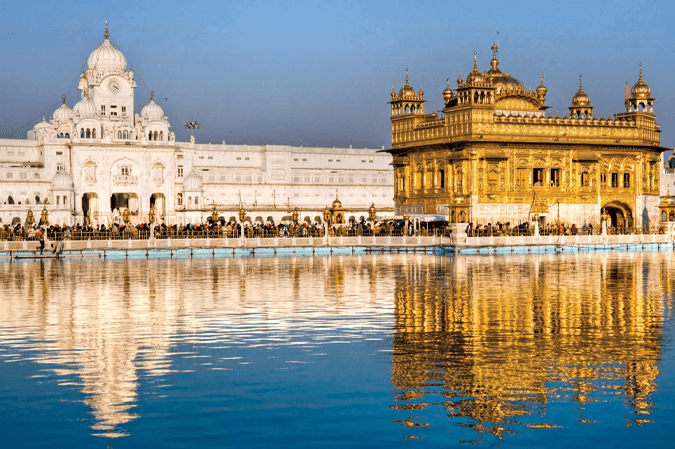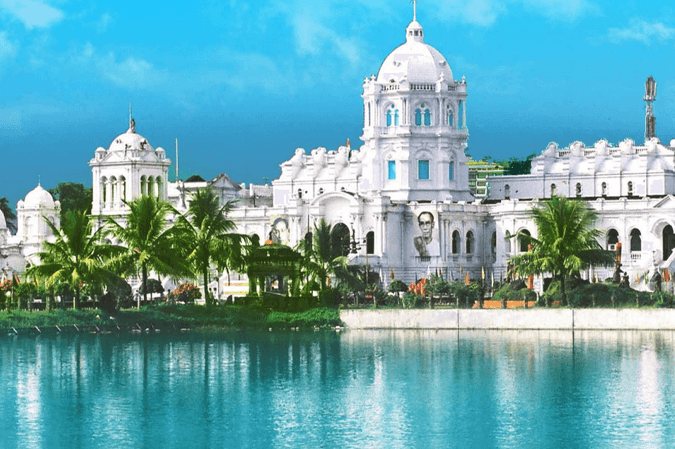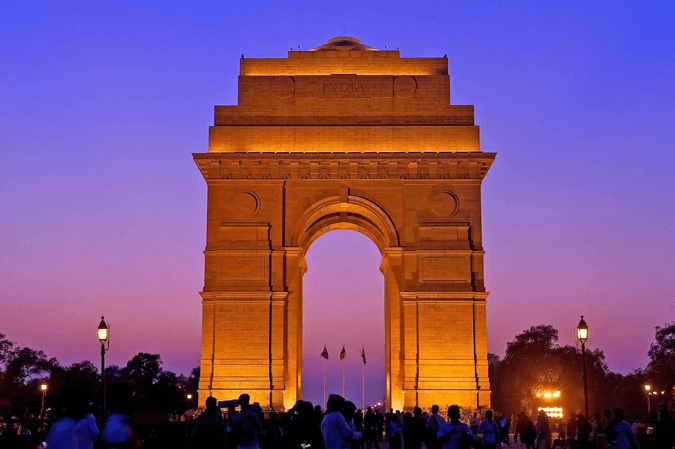1. History
Punjab, a state in the northern part of India, has a rich and dynamic history. The name “Punjab” is derived from the Persian words “Panj” (five) and “Aab” (water), referring to the five rivers that flow through the region. The history of Punjab is deeply rooted in ancient civilizations, with the Indus Valley Civilization being one of the earliest in the region.
Throughout its history, Punjab has been a significant cultural and trade center due to its strategic location. It has witnessed the rise and fall of several empires, including the Maurya, Gupta, and Mughal empires. The region became an epicenter of Sikhism in the 15th century with the teachings of Guru Nanak Dev, the founder of the Sikh religion. The Sikh Empire, under Maharaja Ranjit Singh in the early 19th century, brought Punjab into prominence, with its capital in Lahore.
During British colonial rule, Punjab played a crucial role in the Indian independence movement. The partition of India in 1947 led to the division of Punjab into two parts: East Punjab in India and West Punjab in Pakistan. This partition led to massive migrations and communal violence. Today, Punjab is known for its vibrant culture, agriculture, and rich history.
2. Landscape
Punjab is known for its fertile plains and river systems, making it one of the most agriculturally productive regions in India. The state’s landscape can be categorized into:
- Plains: The majority of Punjab is covered by the fertile alluvial plains formed by the rivers Indus, Beas, Sutlej, Ravi, and Chenab. These plains are ideal for agriculture, especially the cultivation of wheat, rice, and sugarcane.
- Shivalik Hills: The northeastern part of Punjab is bordered by the Shivalik Hills, which are part of the outer Himalayas.
- River Systems: Punjab’s landscape is heavily influenced by its rivers, which have historically supported the state’s agrarian economy.
3. Area
Punjab covers an area of approximately 50,362 square kilometers (19,445 square miles), making it one of the smaller states in India. Despite its size, it is one of the most densely populated and agriculturally prosperous regions in the country.
4. Climatic Conditions
Punjab experiences a subtropical climate, with three main seasons:
- Summer: (April to June) is hot and dry, with temperatures often exceeding 40°C (104°F). The region experiences dry winds known as “loo” during this season.
- Monsoon: (July to September) brings relief with moderate to heavy rainfall, particularly in the southern and southeastern parts of the state. The average annual rainfall is about 960 mm, but it varies across the state.
- Winter: (October to March) is cold and dry, with temperatures ranging from 5°C to 15°C (41°F to 59°F). The northern parts, closer to the Shivalik Hills, experience colder winters with occasional frost.
5. Historical Places
Punjab is home to many historical and religious sites that reflect its rich cultural heritage:
- Golden Temple (Harmandir Sahib): Located in Amritsar, this is the holiest shrine in Sikhism, attracting millions of pilgrims and tourists each year.
- Jallianwala Bagh: Also in Amritsar, this memorial site commemorates the tragic massacre of unarmed civilians by British troops in 1919.
- Wagah Border: The border crossing between India and Pakistan near Amritsar is famous for its daily flag-lowering ceremony.
- Anandpur Sahib: One of the holiest places in Sikhism, this town is where Guru Gobind Singh founded the Khalsa in 1699.
- Sheesh Mahal: Located in Patiala, this palace is known for its beautiful mirror work and is a symbol of the royal heritage of Punjab.
6. Festivals
Punjab’s festivals are a reflection of its agricultural roots and vibrant culture:
- Baisakhi: Celebrated on April 13th or 14th, Baisakhi marks the beginning of the harvest season and the Punjabi New Year. It is also significant for Sikhs as it commemorates the formation of the Khalsa.
- Lohri: Celebrated in January, Lohri marks the end of winter and the arrival of longer days. It is traditionally associated with the harvest of sugarcane.
- Gurpurab: Celebrated by Sikhs, Gurpurabs mark the birth anniversaries of the Sikh Gurus, particularly Guru Nanak and Guru Gobind Singh, with prayers, processions, and community services.
- Teej: A monsoon festival celebrated mainly by women, Teej involves singing, dancing, and traditional rituals.
- Diwali: The festival of lights is celebrated with great enthusiasm in Punjab, with fireworks, sweets, and prayers.
7. Environment
Punjab’s environment is heavily shaped by its agricultural practices, which dominate the state’s economy:
- Agriculture: Known as the “Granary of India,” Punjab is a major producer of wheat, rice, sugarcane, and maize. However, intensive farming practices have led to environmental challenges, including soil degradation, water scarcity, and pollution due to the excessive use of chemical fertilizers and pesticides.
- Biodiversity: The Shivalik Hills in the northeast and the wetlands in the state, like Harike Wetland, are important for biodiversity. These areas support a variety of flora and fauna, including migratory birds.
- Water Resources: Punjab’s river systems are crucial for irrigation, but the state faces challenges related to groundwater depletion and pollution from industrial and agricultural runoff.
8. Society
Punjab’s society is characterized by its vibrant culture, strong sense of community, and rich traditions:
- Population: Punjab has a diverse population, with the majority being Sikhs, followed by Hindus, Muslims, and Christians. The state is known for its high literacy rate and progressive social indicators.
- Language: Punjabi is the official language, and Gurmukhi script is commonly used. Hindi and English are also widely spoken.
- Culture: Punjab is known for its rich cultural heritage, including its folk music, dance (Bhangra and Giddha), and traditional dress (Salwar Kameez, Turban).
- Cuisine: Punjabi cuisine is famous worldwide for its rich flavors and hearty dishes. Popular dishes include Makki di Roti with Sarson da Saag, Butter Chicken, Lassi, and Amritsari Kulcha.
9. Interesting and Hidden Facts
- The Land of Gurus: Punjab is the birthplace of Sikhism and has numerous historical Gurdwaras associated with the Sikh Gurus.
- Operation Blue Star: The Golden Temple was the site of Operation Blue Star in 1984, a military operation ordered by the Indian government to remove militants. This event had significant political and social implications.
- Rich in Martial Traditions: Punjab has a long martial tradition, with a significant contribution to the Indian Armed Forces. The state has produced many soldiers and officers who have served in the military.
- World’s Largest Grain Market: Khanna in Punjab is home to Asia’s largest grain market, reflecting the state’s importance in India’s agricultural sector.
- Punjabi Diaspora: Punjabis have a significant presence worldwide, particularly in countries like Canada, the United Kingdom, and the United States. The Punjabi diaspora is known for its strong sense of community and cultural pride.
Sources
- History and Cultural References:
- Grewal, J. S. The Sikhs of the Punjab (The New Cambridge History of India), Cambridge University Press, 1998.
- Singh, Khushwant. A History of the Sikhs: Volume 1: 1469-1839, Oxford University Press, 2004.
- Geography and Landscape:
- Punjab Government Official Website, “Geography and Landscape,” 2023.
- Encyclopedia Britannica, “Punjab,” 2023.
- Climate:
- Indian Meteorological Department (IMD), “Climatic Conditions of Punjab,” 2022.
- Historical Places:
- Archaeological Survey of India, “Monuments of Punjab,” 2021.
- Lonely Planet India, Punjab: Historical and Cultural Landmarks, Lonely Planet Publications, 2020.
- Festivals:
- The Hindu, “Festivals of Punjab,” 2022.
- Punjab Tourism Official Website, “Festivals and Events,” 2023.
- Environment:
- Punjab State Council for Science & Technology, “Environmental Profile of Punjab,” 2021.
- Ministry of Environment, Forest and Climate Change, “Biodiversity and Conservation in Punjab,” 2020.
- Society:
- The Times of India, “Social Structure and Culture in Punjab,” 2022.
- United Nations Development Programme (UNDP), “Human Development Report 2020.”
- Interesting and Hidden Facts:
- Economic Times, “Unique Aspects of Punjab’s Economy,” 2022.
- Punjab Tourism Official Website, “Interesting Facts about Punjab,” 2023.
- Image Source: cdn.britannica.com



